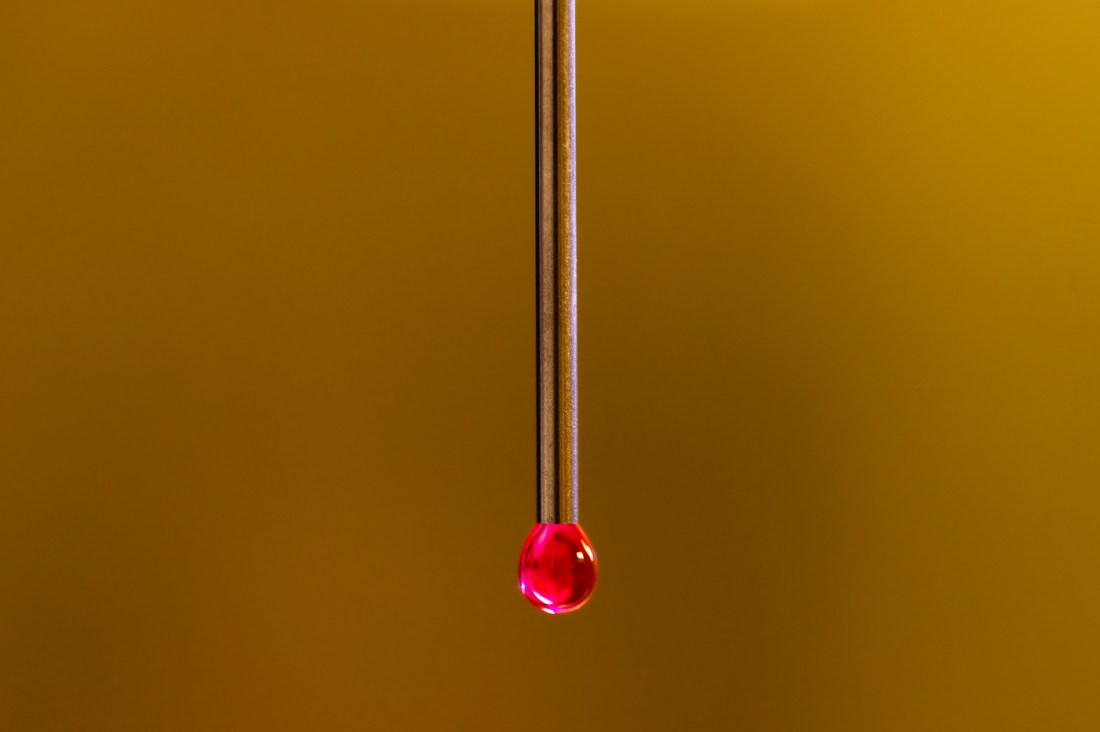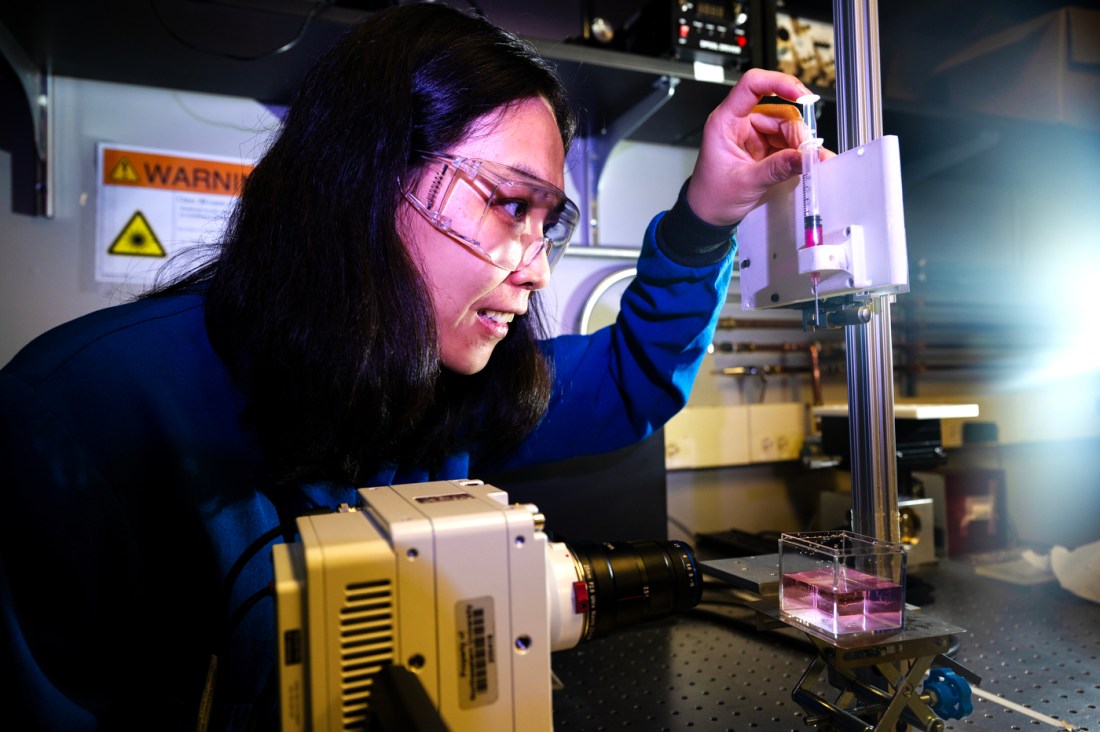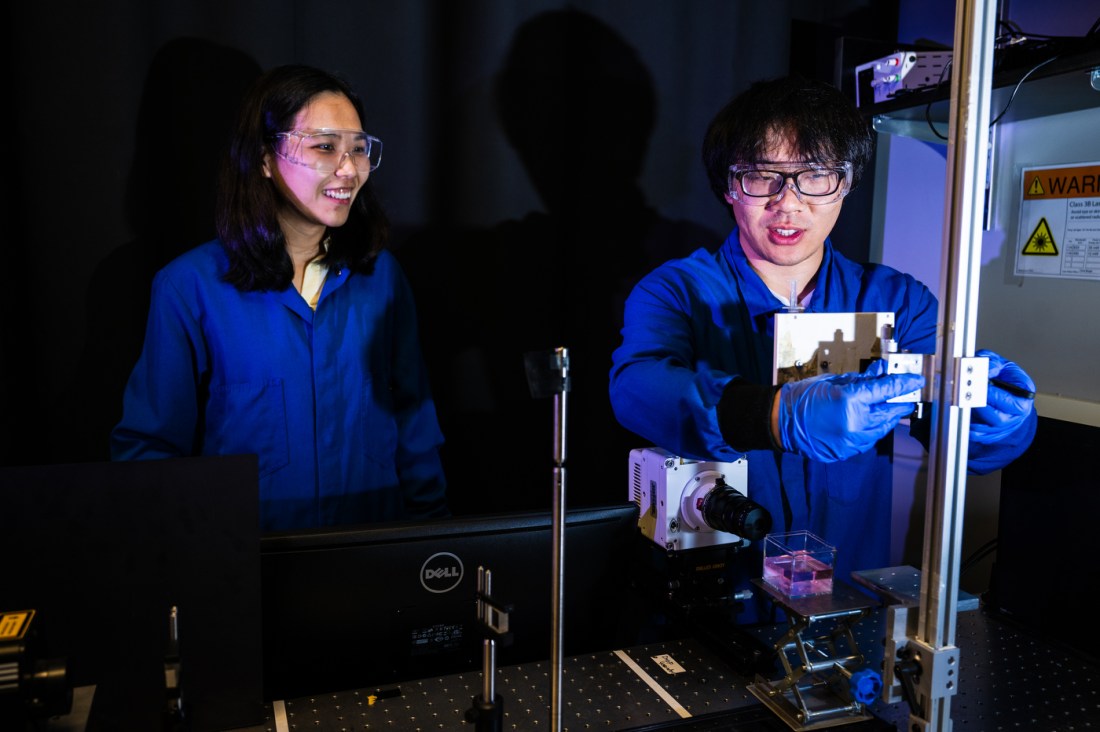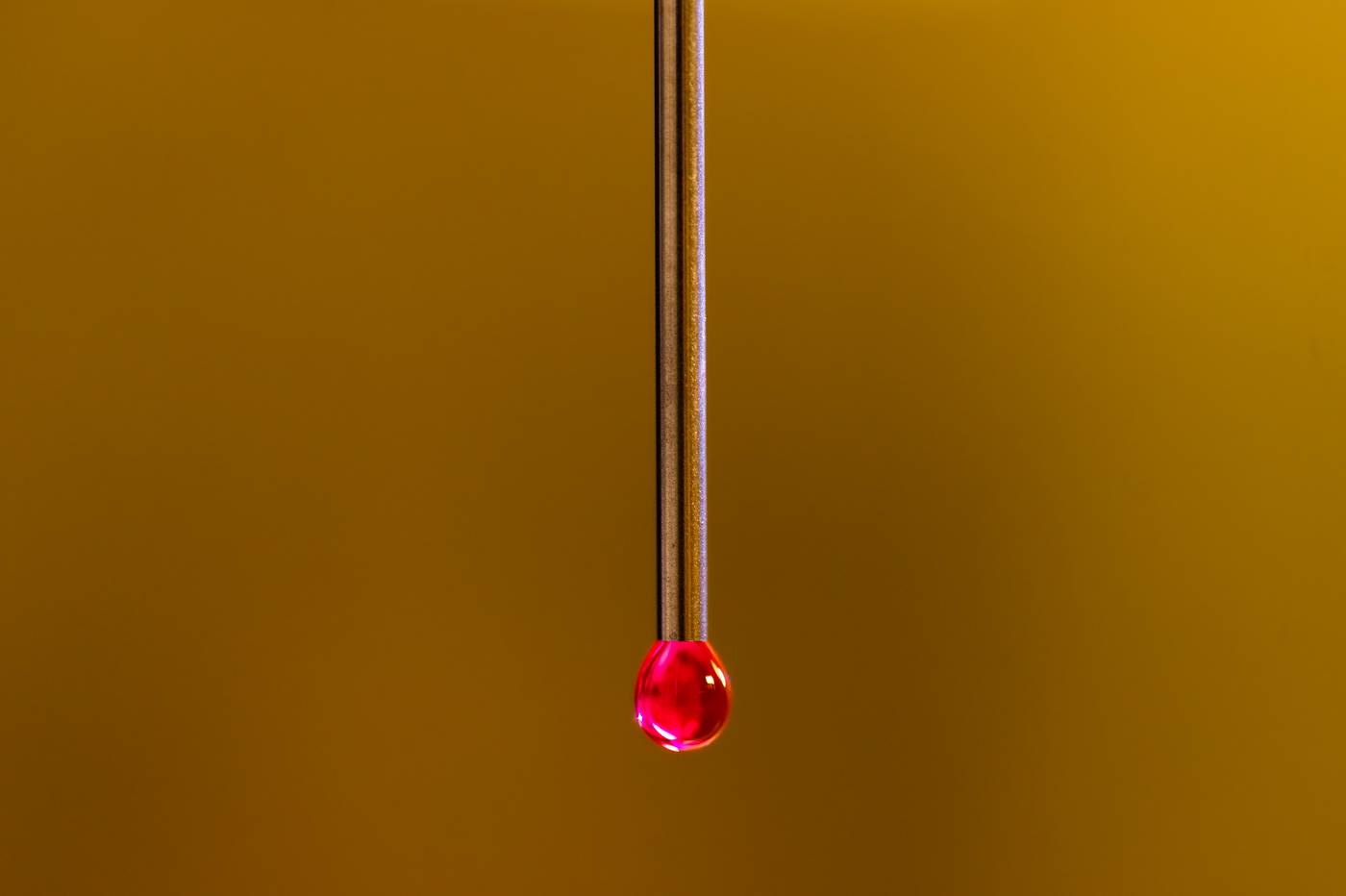Xiaoyu Tang and her team will soon begin the process of developing a new framework to better understand the fluid dynamics at play when droplets of water filled with particles are dropped into bodies of liquid.

Inkjet printers have been around since the late 1980s, but they’ve improved leaps and bounds since their introduction more than 30 years ago.
On one hand, they are an engineering marvel — millions of multi-colored ink droplets are precisely deposited onto a blank piece of paper to produce everything from written reports to colorful invitations.
But on the other hand, the opportunities for disruption are still profound, especially for more complex printing jobs involving large 3D structures and multiple types of materials.
At Northeastern University, Xiaoyu Tang, a mechanical and industrial engineering professor, is helping drive innovation in the space at the university’s Multiphase Transport Research Lab.
As principal investigator, Tang leads a team of researchers focused on understanding materials that operate at the intersection of fluid and solid states — materials that tie directly to the technology inside your printer
Thanks in large part to a recently awarded NSF Career Award grant, Tang and her team will soon begin the process of developing a new framework to better understand the fluid dynamics at play when droplets of water filled with particles are dropped into bodies of liquid.


This work, Tang says, could help engineers design more robust and optimized ink processes and more resilient printing hardware.
The research itself will involve some pretty high-tech pieces of equipment, namely high-speed cameras capable of capturing 10,000 images in one second.
That level of speed is a necessity, Tang explains.
“The impact process [of the droplet hitting the water] will only be under a hundred milliseconds,” she says.
When analyzing the pictures and videos taken, Tang and her team will be taking note of a few key factors, namely the morphology of the droplet on impact, its particle distributions, and its velocity field.
There’s already plenty of well-established research documenting the physics at play when a water droplet is impacted on a larger body of water, Tang explains. With this project, the team is hoping to discover how those physics are altered when those droplets are filled with corn starch and silica particles, among others.
“Adding a lot of particles into liquid makes things more complicated because the viscosity of the liquid is not constant anymore and the mixture can even jam to behave like a solid, especially during the droplet impact process,” she says. “A good example is the ‘Oobleck effect,’ where people can run on a pool of cornstarch particles in water, but will sink if they stand.”
This work directly relates back to 3D printing because it will hopefully provide Tang and her team with deeper insights into how different types of materials interact with one another in more fluid states.
“How 3D printing works is you are basically depositing droplets of liquid onto a substrate, you cure it, and then you build that up layer by layer,” she says. “But sometimes it may not fully cure, so it remains in a liquid form and then when the next droplet comes that interacts with that liquid it will deform differently. … There’s a lot that can happen between the droplet and the uncured layer.”
The hope is that by better understanding these interactions, 3D printer makers will be able to “control the interaction between the droplet and the substrate,” she says.
For the project, the team plans to use a combination of many advanced diagnostic technologies, ,Tang explains. But the plan is to develop a platform that other researchers in space can then build and expand on.
